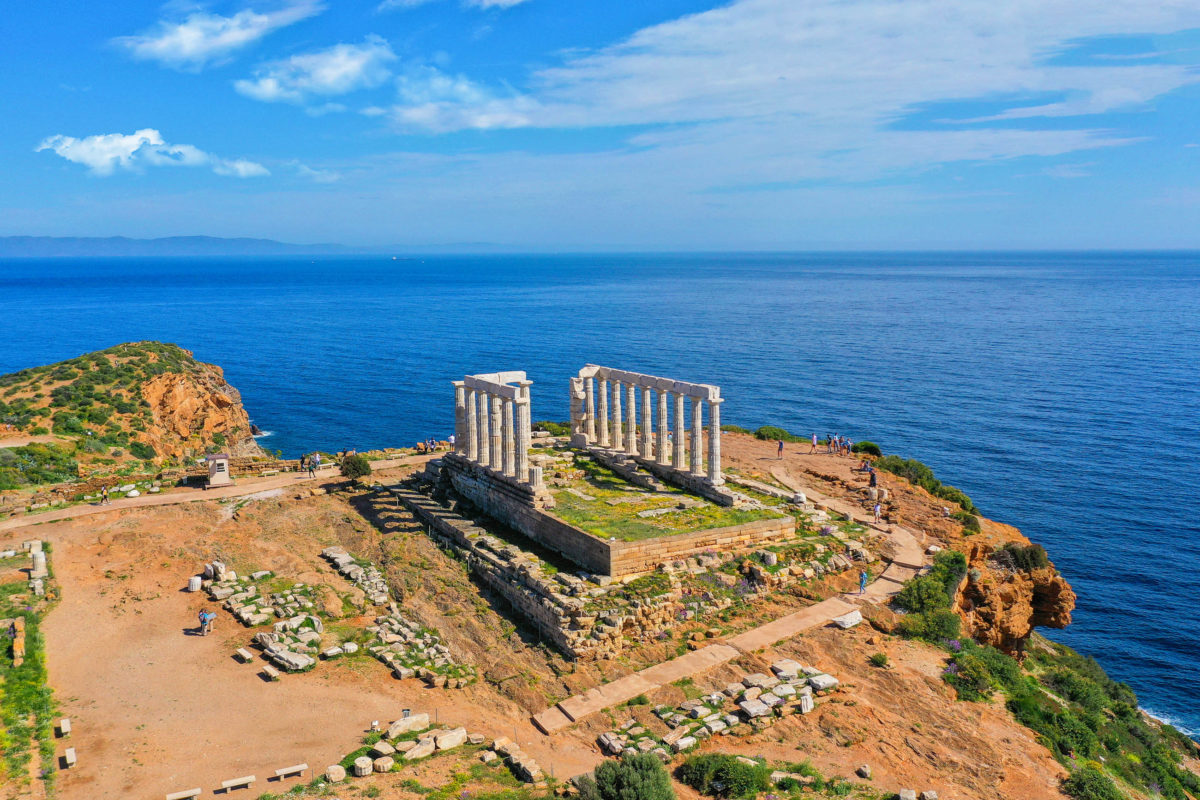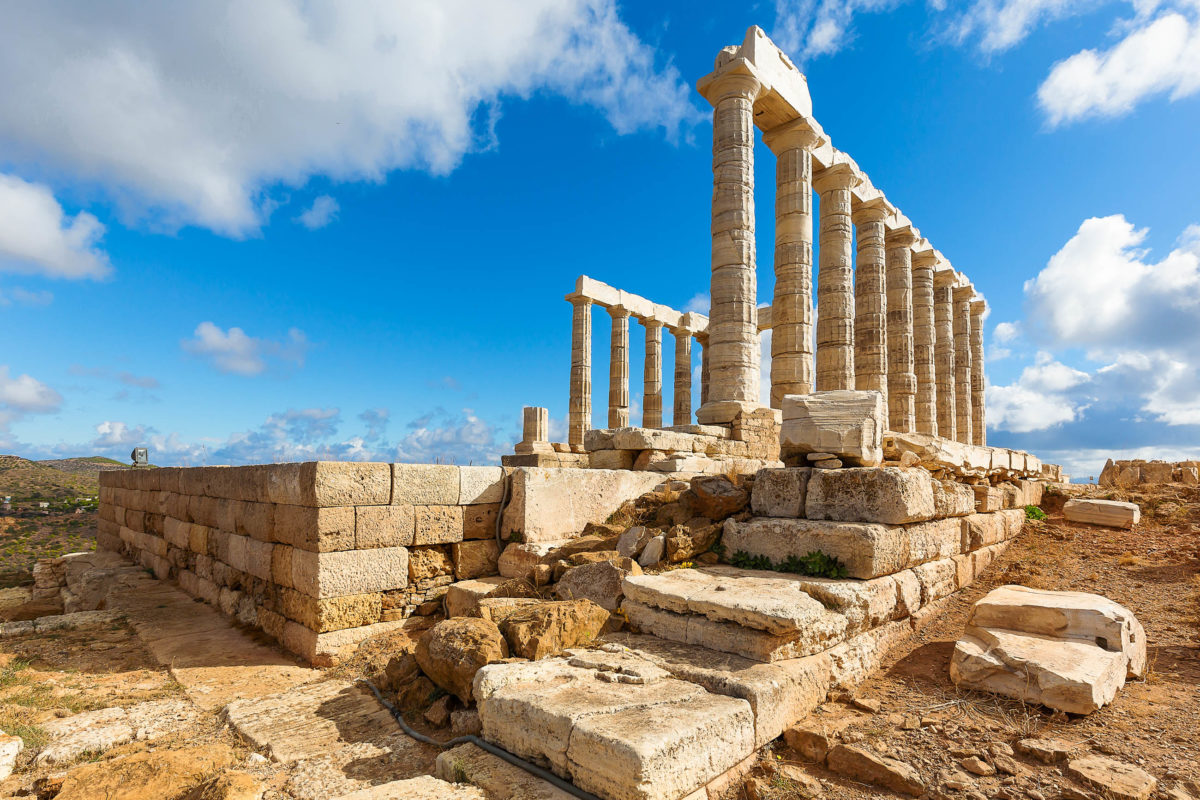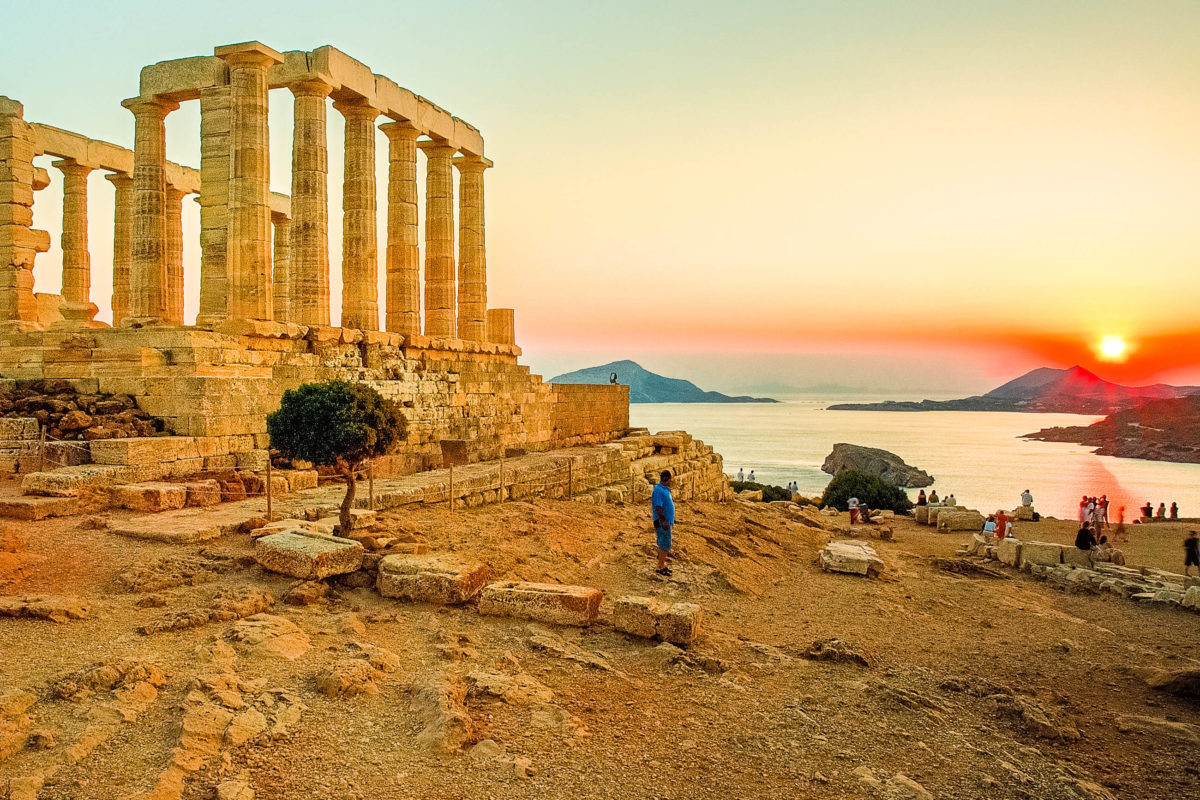Das Kap Sounion an einem der südlichsten Punkte Griechenlands ist gemeinsam mit den Säulen des antiken Poseidon-Tempels der perfekte Ort für eine Sonnenuntergangs-Show.
Das malerische Kap Sounion befindet sich in Griechenland am südlichsten Punkt der Halbinsel Attika und gehört zu unseren Top 10 Sehenswürdigkeiten von Griechenland. Der berühmte Marmortempel des Poseidon begrüßt dort seit Jahrtausenden die in den Hafen von Athen einfahrenden Schiffe.
Das Kap Sounion liegt etwa eine Autostunde von der griechischen Hauptstadt Athen entfernt und ist für Tagesausflüge äußerst beliebt. Der weg zum Kap Sounion führt über die Nationalstraße 91 an der Attischen Riviera entlang und an einigen noblen Siedlungen vorbei. Von Athen aus gibt es regelmäßige Busverbindungen.
Inhaltsverzeichnis
BILDER: Kap Sounion
Die Landspitze ragt 60m über das Mittelmeer und fällt an allen Seiten steil in die Tiefe. Das Kap Sounion ist somit atemberaubender Aussichtspunkt über das Mittelmeer und die umliegenden Inseln. An klaren Tagen fällt der Blick fast 100km weit bis zur Insel Milos. Von hier lässt sich auf spektakuläre Weise beobachten, wie am Abend die Sonne glutrot im Meer versinkt.
Legende des Kaps Sounion
Angeblich soll sich König Ägeus, der Vater des Theseus vom Kap Sounion ins Meer gestürzt haben. Er wartete auf die Rückkehr seines Sohnes vom Kampf gegen den Minotaurus und als er dessen Schiff mit schwarzen Segeln sah, dem vereinbarten Zeichen, dass Theseus in Kreta gefallen war, nahm er sich das Leben. Leider hatte Theseus im Siegesrausch nur vergessen, die schwarzen Segel gegen weiße zu tauschen und so starb sein Vater völlig umsonst. Dafür wurde die Agäis nach dem unglücklichen König benannt.
Tempel des Poseidon am Kap Sounion

Auf einer künstlichen Terrasse thronen noch heute die Überreste des Tempels des Poseidon, dem griechischen Gott der Meere. In der Antike lag hier eine Handelsstadt mit Kultstätten des Poseidon und der Athene. Spuren der Anlegeplätze aus dem 4. Jahrhundert vor Christus sind heute noch sichtbar.
Der Poseidon-Tempel wurde im 5. Jahrhundert vor Christus zur selben Zeit wie der Parthenon auf der Akropolis in Athen errichtet und diente Seeleuten als Opferstätte. Zu hunderten fanden sie sich im Poseidon-Tempel ein, um den grimmigen Meeresgott milde zu stimmen und für eine gute Reise zu bitten.
Neben Gebeten brachten die Gläubigen Tieropfer oder Weihgaben dar, von denen viele direkt am Kap aufgestellt wurden. Eine davon ist der berühmte Sounion-Krieger, der sich heute im Archäologischen Nationalmuseum in Athen befindet. Gemeinsam mit anderen so genannten Kouroi (Jünglingsstatuen) wachte er seit dem 7. Jahrhundert vor Christus über das Kap.
Säulen aus Agrileza-Marmor

Von den einst 42 dorischen Säulen, die den Poseidon-Tempel umgaben, stehen am Kap Sounion nur noch wenige aufrecht. Die Säulen wurden aus Agrileza-Marmor gefertigt, dass nicht ganz so fein ist, wie der auf der Akropolis verwendete Marmor aus dem Penteli-Gebirge. Die Säulen wurden jedoch ohne oxidierende Eisenhalterungen errichtet und erstrahlen somit noch heute in makellosem Weiß.
Nur hie und da wird es von antikem Graffiti unterbrochen, denn schon der britische Admiral Lord Byron hat sich am Poseidon-Tempel namentlich verewigt. Von den übrigen Skulpturen, Reliefs und Friesen, die einst den Poseidon-Tempel schmückten, sind leider nur noch spärliche Reste vorhanden.
Nationalpark am Kap Sounion

Das Kap Sounion und die Ruinen des Poseidon-Tempels wurden zum Nationalpark erklärt, somit wurde der Bebauung des idyllischen Kaps Einhalt geboten. In seiner Nähe befinden sich nur zwei Tavernen und ein kleines Hotel, die die idyllische Kulisse des Kaps Sounion absolut nicht stören. Ganz im Gegenteil sorgen die Tavernen für eine leckere Fischmahlzeit und ein entspannendes Gläschen Wein vor atemberaubender Kulisse.





